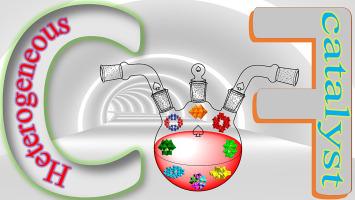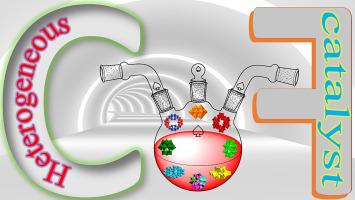Polyoxometalate-based covalent organic frameworks: The next generation of heterogeneous catalysts
IF 23.5
1区 化学
Q1 CHEMISTRY, INORGANIC & NUCLEAR
引用次数: 0
Abstract
Within the past 10 years, the rapid emergence of one subgroup of crystalline materials – polyoxometalate-based covalent organic frameworks (POMCOFs), composed of both inorganic polyoxometalates (POMs) molecular catalysts and organic building bricks – has uncovered their immense potential with regard to architectural versatility and potential application. However, work on synthesizing covalent organic frameworks (COFs) has thus far mostly been restricted to a number of conventional organic ligands; the development of porous crystalline POMCOFs as advantageous heterogeneous catalysts will be a promising pathway to catalyzing a variety of reactions more efficiently. Not only do these systems simultaneously offer the privileges of both homo- and heterogeneous catalysis, but they also allow a combination of unique recyclability and remarkable stability, along with adjustable selectivity. They can also promote electron transfer activity and the POMCOFs can sustain charge segregation of POMs. Concomitantly, these systems also display enhanced dispersion, elevated adsorption susceptibility, and ease of approach to the active sites. While earlier reviews have focused primarily on photocatalysis or photothermal catalysis, our review provides a broader perspective with particular emphasis on their design, synthesis, and diverse catalytic applications of POMCOFs. Therefore, we here summarize recent work on these valuable heterogeneous catalysts. This review affords an exhaustive description of the current development of porous POMCOFs, discusses their synthesis and classification, and examine their utilization, particularly in the area of catalysis.


多金属酸氧基共价有机骨架:新一代非均相催化剂
在过去的10年里,晶体材料的一个亚群——基于多金属氧酸盐的共价有机框架(POMCOFs)的迅速出现,它由无机多金属氧酸盐(pom)分子催化剂和有机建筑砖组成,揭示了它们在建筑多功能性和潜在应用方面的巨大潜力。然而,迄今为止,合成共价有机框架(COFs)的工作大多局限于一些传统的有机配体;多孔晶型POMCOFs作为一种优势的非均相催化剂的开发将为更有效地催化各种反应提供一条有希望的途径。这些系统不仅同时提供同质催化和多相催化的特权,而且还具有独特的可回收性和显著的稳定性,以及可调节的选择性。它们还能促进电子转移活性,并能维持聚甲醛的电荷分离。同时,这些系统还表现出增强的分散性,提高的吸附敏感性,以及易于接近活性位点。虽然之前的综述主要集中在光催化或光热催化方面,但我们的综述提供了一个更广阔的视角,特别强调了POMCOFs的设计、合成和各种催化应用。因此,我们在此总结了这些有价值的多相催化剂的最新研究进展。本文综述了目前多孔多孔碳纳米管的发展,讨论了它们的合成和分类,并研究了它们的应用,特别是在催化领域。
本文章由计算机程序翻译,如有差异,请以英文原文为准。
求助全文
约1分钟内获得全文
求助全文
来源期刊

Coordination Chemistry Reviews
化学-无机化学与核化学
CiteScore
34.30
自引率
5.30%
发文量
457
审稿时长
54 days
期刊介绍:
Coordination Chemistry Reviews offers rapid publication of review articles on current and significant topics in coordination chemistry, encompassing organometallic, supramolecular, theoretical, and bioinorganic chemistry. It also covers catalysis, materials chemistry, and metal-organic frameworks from a coordination chemistry perspective. Reviews summarize recent developments or discuss specific techniques, welcoming contributions from both established and emerging researchers.
The journal releases special issues on timely subjects, including those featuring contributions from specific regions or conferences. Occasional full-length book articles are also featured. Additionally, special volumes cover annual reviews of main group chemistry, transition metal group chemistry, and organometallic chemistry. These comprehensive reviews are vital resources for those engaged in coordination chemistry, further establishing Coordination Chemistry Reviews as a hub for insightful surveys in inorganic and physical inorganic chemistry.
 求助内容:
求助内容: 应助结果提醒方式:
应助结果提醒方式:


